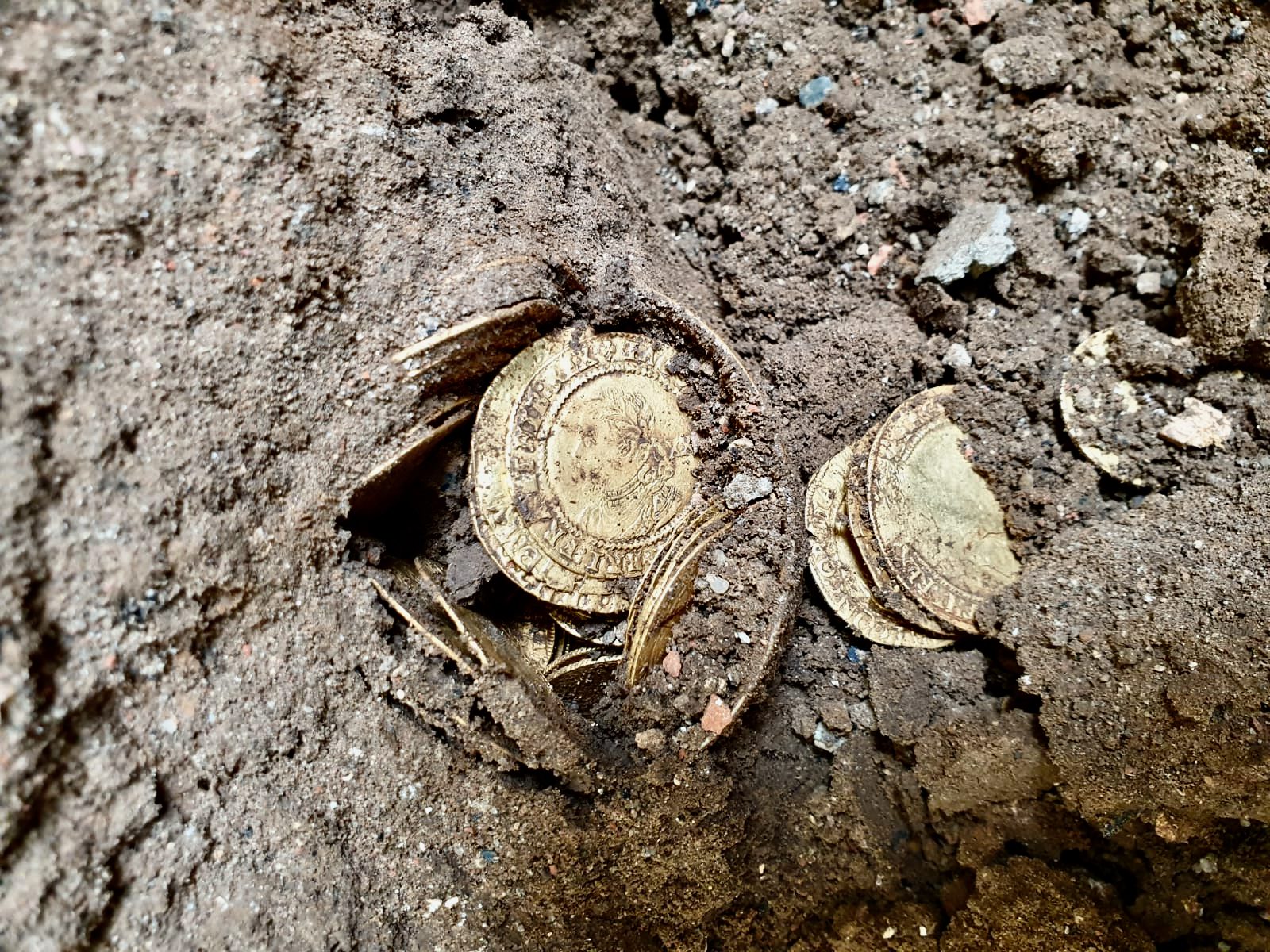In the UK, any person who stumbles across a cache of gold or silver from centuries gone by is officially a treasure hunter. This means we’re obligated by both technicality and awesomeness to tell you that a couple in Yorkshire, in northern England, recently switched from being “house renovators” to “incredibly successful treasure finders” when they uncovered an 18th-century trove of gold coins – estimated to be worth up to £250,000 ($290,000) – under the floorboards of their home.
“It is a wonderful and truly unexpected discovery from so unassuming a find location,” said Gregory Edmund from auctioneer house Spink & Son, where the coins will go up for auction on October 7, in a statement sent to IFLScience.
“This find of over 260 coins is also one of the largest on archaeological record from Britain, and certainly for the 18th century period.”
The coin hoard as discovered under the floorboards. Image credit: Spink & Son
The coins were discovered in a salt-glazed earthenware cup, no bigger than a soda can, where they had been stashed almost certainly by Joseph and Sarah Fernley-Maisters, a couple who married in 1694 – the same year the Bank of England was founded.
And they appear to have been skeptical of the institution, Edmund said. “Joseph and Sarah clearly distrusted the newly-formed Bank of England, the ‘banknote’ and even the gold coinage of their day,” he explained, “because they [chose] to hold onto so many coins dating to the English Civil War and beforehand.”
As members of the influential Maisters family, Joseph and Sarah clearly had cash to spare: there are $50 and £100 coins in the trove, which reportedly has a total face value of around £100,000 ($116,000) in today’s money. The coins date from 1610 to 1727, spanning the reigns of James I, Charles I, the Republican Commonwealth, Charles II, James II, William and Mary, Anne, and George I.
The oldest and newest coins in the hoard, dating from 1610 to 1727, from the reigns of James I to George I. Image credit: Spink & Son
The family was most successful between the 16th and 18th centuries. As merchants, trading out of Baltic ports, they made a fortune from iron ore, timber, and coal, and in the early 1700s many moved into politics – but not long after the deaths of Joseph and Sarah, the family line dwindled; the last Maisters to live in Maister House died childless, and by the end of the 19th century the family business had declined into obscurity.
That may be why the coins were never retrieved, the auctioneers suggested – though they admitted it’s strange that they were stashed under the floorboards at all during a time when banking was pretty common for wealthier families.
Even weirder, given the value of the treasure, is why it took so long to find.
“Why they never recovered the coins when they were really easy to find just beneath original 18th-century floorboards is an even bigger mystery,” Edmund said. “But it is one hell of a piggy bank.”
Source Link: Gold Coin Treasure Trove Worth Nearly $300,000 Discovered Under Floorboards Of UK Home
